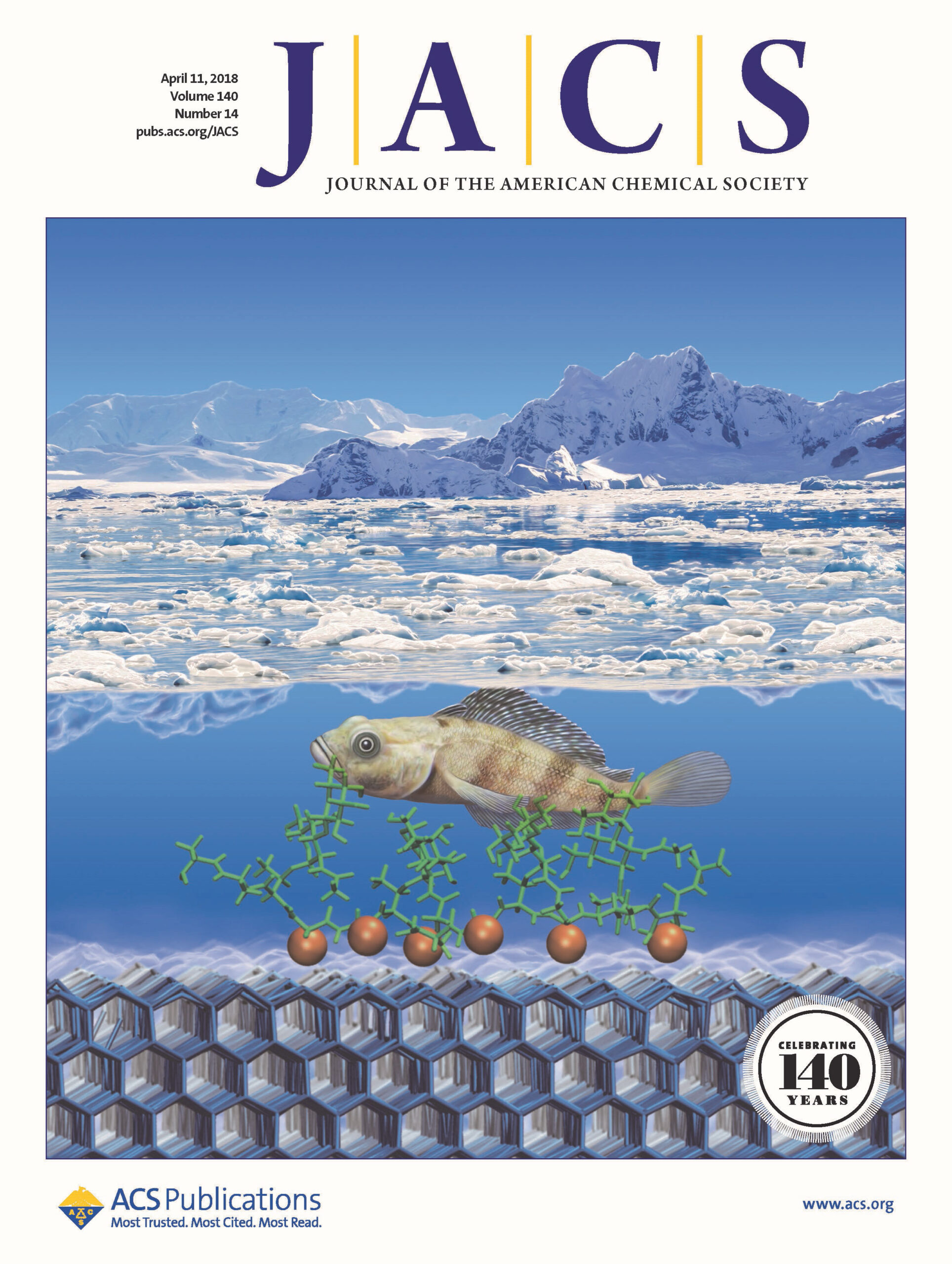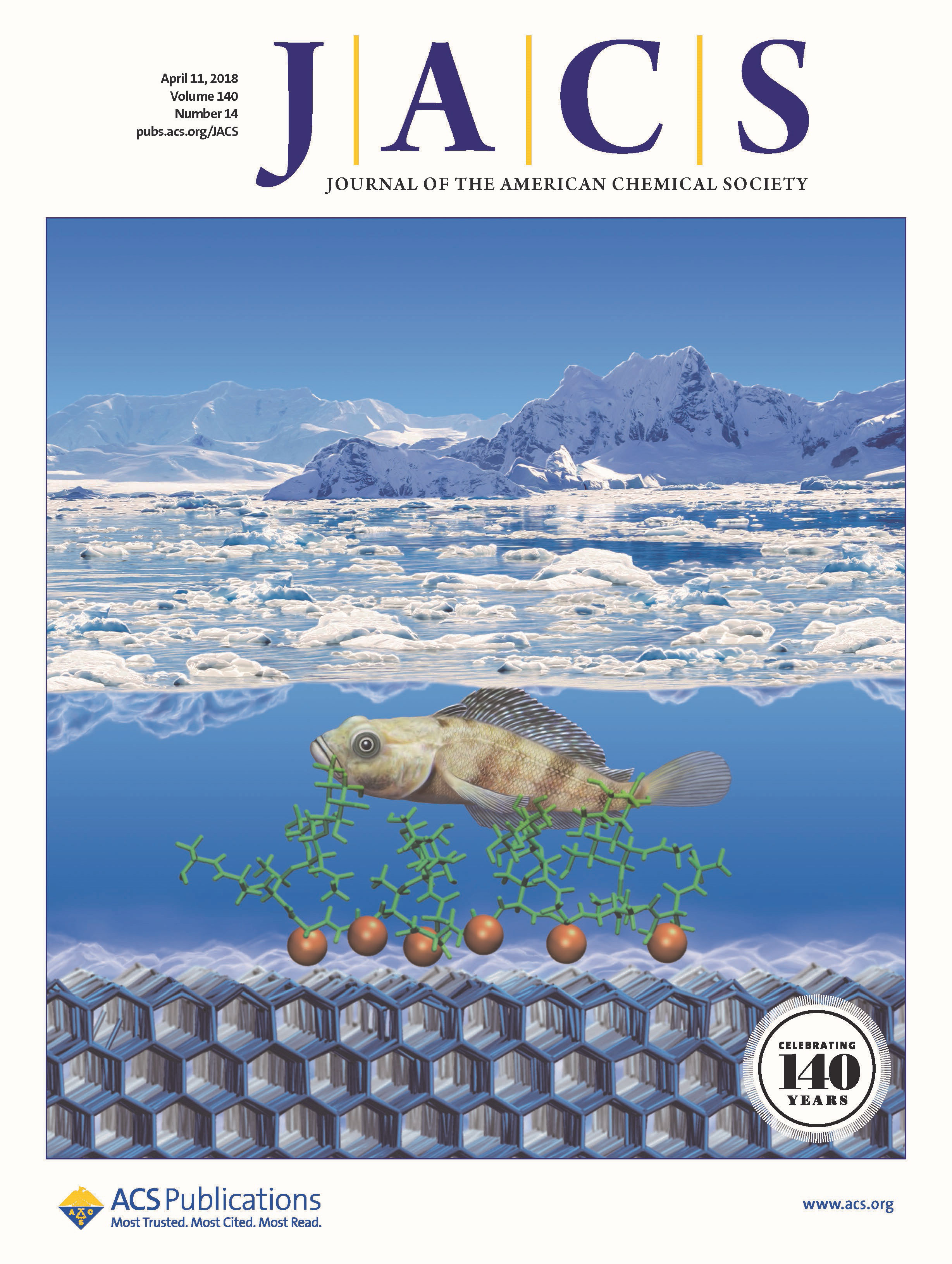
The cover art for Journal of the American Chemical Society, Volume 140, Issue 14 was supplied by the Molinero Group. The image (pictured left) coincides with Molinero’s article Antifreeze Glycoproteins Bind Reversibly to Ice via Hydrophobic Groups on pages 4751-4954 of the issue.
Abstract: Antifreeze molecules allow organisms to survive in subzero environments. Antifreeze glycoproteins (AFGPs), produced by polar fish, are the most potent inhibitors of ice recrystallization. To date, the molecular mechanism by which AFGPs bind to ice has not yet been elucidated. Mutation experiments cannot resolve whether the binding occurs through the peptide, the saccharides, or both. Here, we use molecular simulations to determine the mechanism and driving forces for binding of AFGP8 to ice, its selectivity for the primary prismatic plane, and the molecular origin of its exceptional ice recrystallization activity. Consistent with experiments, AFGP8 in simulations preferentially adopts the PPII helix secondary structure in solution. We show that the segregation of hydrophilic and hydrophobic groups in the PPII helix is vital for ice binding. Binding occurs through adsorption of methyl groups of the peptide and disaccharides to ice, driven by the entropy of dehydration of the hydrophobic groups as they nest in the cavities at the ice surface. The selectivity to the primary prismatic plane originates in the deeper cavities it has compared to the basal plane. We estimate the free energy of binding of AFGP8 and the longer AFGPs4–6, and find them to be consistent with the reversible binding demonstrated in experiments. The simulations reveal that AFGP8 binds to ice through a myriad of conformations that it uses to diffuse through the ice surface and find ice steps, to which it strongly adsorbs. We interpret that the existence of multiple, weak binding sites is the key for the exceptional ice recrystallization inhibition activity of AFGPs.
Read more here.

